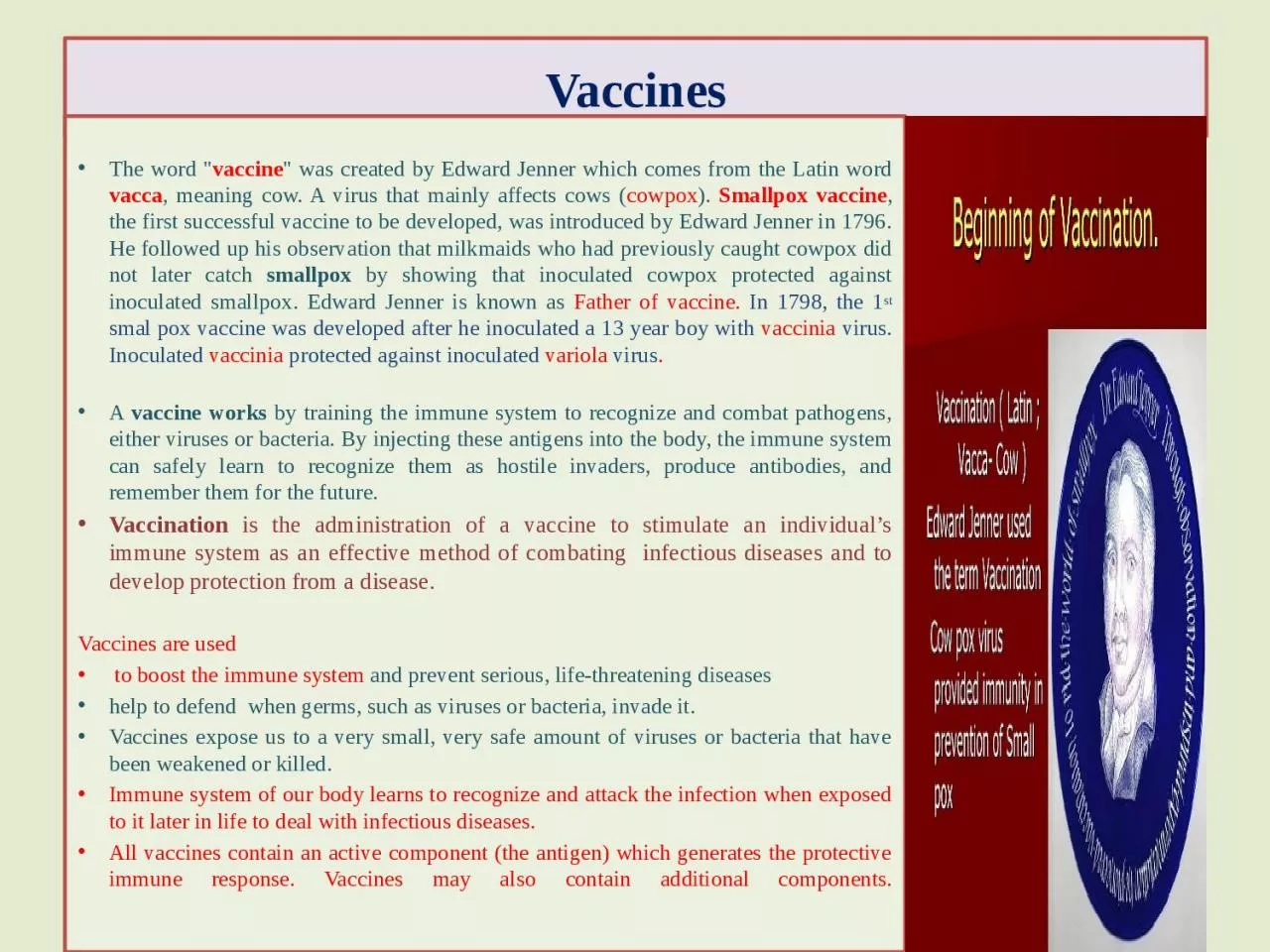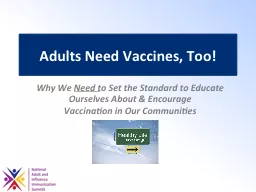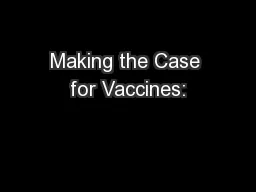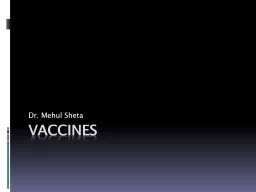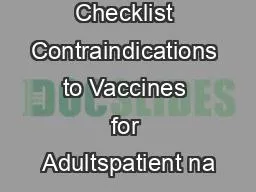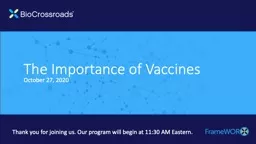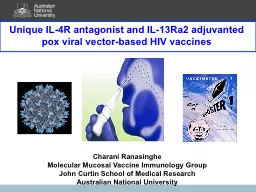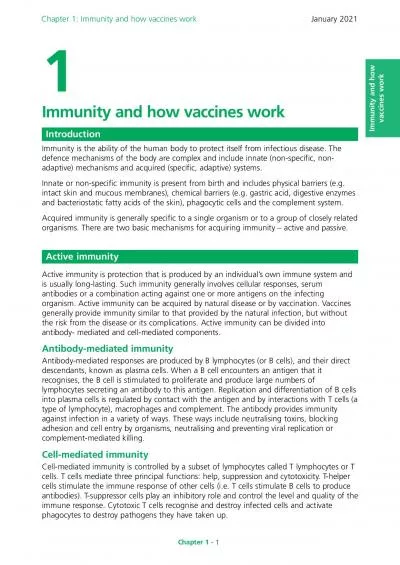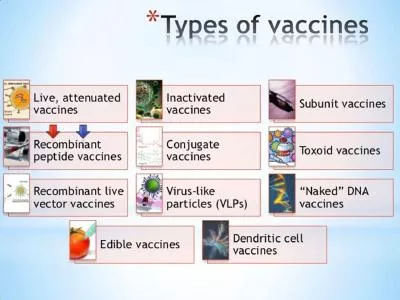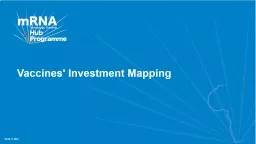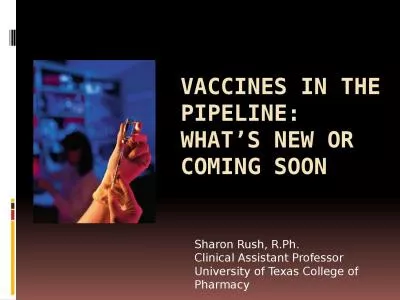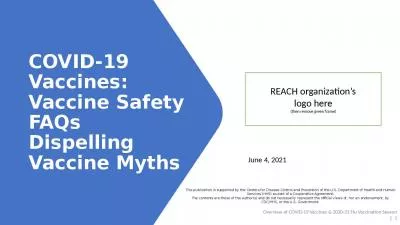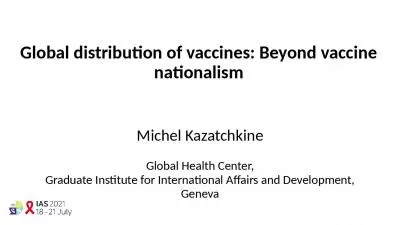PPT-Vaccines The word " vaccine
Author : rodriguez | Published Date : 2022-06-18
was created by Edward Jenner which comes from the Latin word vacca meaning cow A virus that mainly affects cows cowpox Smallpox vaccine the first successful
Presentation Embed Code
Download Presentation
Download Presentation The PPT/PDF document "Vaccines The word " vaccine" is the property of its rightful owner. Permission is granted to download and print the materials on this website for personal, non-commercial use only, and to display it on your personal computer provided you do not modify the materials and that you retain all copyright notices contained in the materials. By downloading content from our website, you accept the terms of this agreement.
Vaccines The word " vaccine: Transcript
Download Rules Of Document
"Vaccines The word " vaccine"The content belongs to its owner. You may download and print it for personal use, without modification, and keep all copyright notices. By downloading, you agree to these terms.
Related Documents

